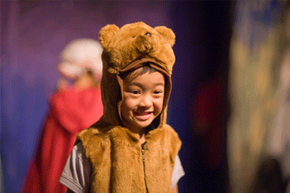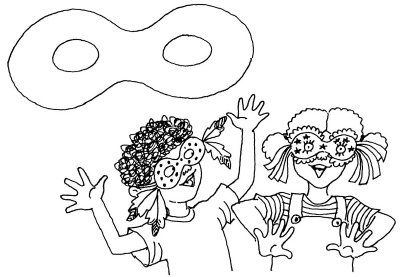If you've ever been in a school-age classroom, you know that one of the greatest impediments to learning is poor behavior. Even a few kids acting out can hinder the transfer and absorption of information and participation rates.
As it is with math and English, it is with drama. You're not going to end up with much of a production unless you first set out, and then enforce, some very clear ground rules for your little actors. Make it known ahead of time which behaviors will not be tolerated in rehearsal. No chatting, no running, no playing with props and no making fun of others' errors are good starts in this regard. To help everyone follow these rules, you'll want to keep as many kids onstage at once as you can. Lots of unsupervised actors in the wings can mean more time spent disciplining than on rehearsing.
Once you've laid the ground rules for play rehearsals, you can move on to the actual play.
Learning lines and lyrics
Keep in mind that your kids will feel more confident if their lines are very easy to remember -- long, wordy monologues might make your actors more nervous than necessary. Take extra care to keep the dialogue appropriate for your age group.
What's more, make sure they practice those lines at home, not just in your class. Ideally, each child will take a script home and memorize their lines as homework, with the help of their parents. You want to use as little rehearsal time as possible on learning lines -- rehearsals are best used for focusing on blocking, acting and delivery.
Directing children
Children require some additional, or sometimes simply different, direction techniques than adults. They might remember less, be more sensitive or easily embarrassed, and have less-developed senses of spatial awareness. To address the specific needs of young actors, consider these tips:
- Get them in the right mindset: Before starting rehearsal, do some sort of ritual to get everyone into the "mood" to practice seriously. This could mean a minute of quiet time, a breathing or speech exercise, or coming up with a collective goal for that day's rehearsal.
- Be specific: Don't expect your actors to know exactly what you mean when you say, "Try to look relaxed," or "Speak to the back row." Instead, describe what a relaxed actor looks like, and demonstrate the volume you're looking for.
- Use tape! It's not easy for kids to remember just where to stand, so make it easy by using color-coded tape for each child, placing an "X" at exactly the spot where he or she should be on the stage.
- Minimize distractions: Make sure no one brings any non-play-related items to rehearsal, and try to minimize interruptions by hanging a "Do Not Disturb" sign on the rehearsal-room door.
- Have an assistant: If at all possible, arrange to have a second adult around during both rehearsals and the big show. Off-stage actors will need supervision and assistance while you're directing, offering cues and setting up the music.
Even with all this, and even in professional adult productions, mistakes will happen, problems will come up and some rehearsals will go poorly. It's the way it goes in the theater, and it goes double when your actors are still drinking milk with lunch. In the end, your biggest ally in producing a children's play is going to be your patience -- and your sense of humor. The show will go on. The kids will have fun. The parents will applaud like they just watched "The Producers," with the original cast, on Broadway.
For more information on kids' theater, including specific drama lesson plans and script ideas, check out the links on the next page.


